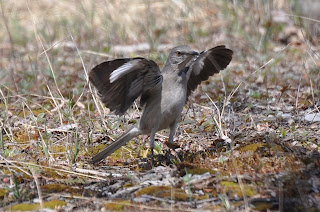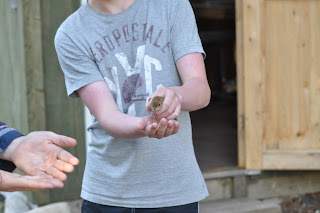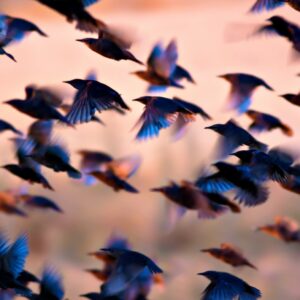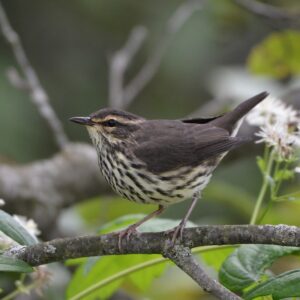Reflections on Birding workshop at Bruce Peninsula Bird Observatory’s Cabot Head Research Station
[three_fourth]
By Guest blogger Anthony Vanderheyden
On Friday, May 3rd, my brother Matthew and I headed up to the Cabot Head Research Station on the Bruce Peninsula, to attend their Spring Birding weekend workshop. This is where we would spend the weekend birding in the Cabot Head Important Bird Area, observing bird banding at the Bruce Peninsula Bird Observatory’s migration monitoring station, learning all about the migration monitoring process, as well as learning more about my favourite birding locale; the Bruce Peninsula.
As we entered Grebe Lodge, we were greeted by Rod Steinacher and his wife Noreen, Marg (another participant in the weekend), station scientist Andrew, as well as three volunteers at the station. We began birding right away, in the hopes of hearing the local Great Horned Owl or Woodcocks. Just as we stepped out of the lodge, the owl flew right over us! That night we got both the owl and the woodcocks “peenting” distantly from the wetlands. We also had a few neat observations such as 3(!) Hoary Bats, a Bald Eagle on a nest, and a Wood Thrush. Later at night, Ted Cheskey joined us after driving in from Ottawa, and we planned the itinerary for the weekend.
The real excitement began the next morning. On the 4th we woke up before 6am and began to bird. However, most of the action was from the balcony of Grebe Lodge where we were staying. Everyone there was treated to spectacular views of Merlins hunting. Merlin is a small dark falcon that specializes in tracking down, capturing and eating small birds. It is extremely fast! As some nocturnal migrants began to fly back to land after ending their night-long journey over the waters of Georgian Bay, a pair of Merlins sprang into action and picked the little songbirds out of mid-air as they struggled to make it back to the safety of land! It was an incredible spectacle. For the entire first two hours of dawn, they continued to fly about, plucking bird after bird from the Bay. The most dramatic story was of a White-throated Sparrow that was trying to evade a Merlin which we closing in on it. The sparrow flew lower and lower and just as the Merlin was about to snag it, the sparrow nose-dived into the water. The merlin veered away, and the sparrow managed to get airborne and continue its sprint towards the shore, right in front of us (about 50 metres out). The Merlin circled back and made another attack which prompted the same response – a nose-dive into the water, now about 30 metres from shore.
Again the sparrow struggled from the water, obviously fatigued, but with the shoreline only a short flight away there was hope; . . . but the hope was quickly lost as the Merlin swooped in again, and neatly grabbed the sparrow that seemed to simply give up in the end. Other highlights from the day included a massive northward movement of Common Loons (278), a large kettle of Broad-winged Hawks above Middle Bluff (about 300), a flyover Upland Sandpiper, as well as many other migrants.Later in the day we added Clay-coloured Sparrow to the day’s list, along with a rare Northern Mockingbird, both in the town of Dyer’s Bay. From the dock we could see Red-necked Grebes and very photogenic Horned Grebes.
Around nightfall, the entire group trekked out to Crane Lake Road, in search of owls. However, in my opinion, the owls were not the highlight. After dark, the fields and marshes of Crane Lake awoke with bird life. Snipes, Woodcocks, Cranes, Whip-poor-wills, an Upland Sandpiper, Great Horned Owls, an Eastern Screech-Owl, a Towhee, a Thrasher, and an American Bittern were all calling at once. I’ve never heard so many birds at night before!
During our final day, we remained at the station. We had a lot of great birds such as a Philadelphia Vireo that literally flew up to the banding station window, a late Common Redpoll, along with many more migrant songbirds. At around noon we said goodbye, and headed home after a great weekend. I learned a lot from this weekend as well as from the people I met. I also learned a lot about the Northern Bruce that even I didn’t know. I am really excited to return here in the summer to see what breeding birds there are to discover, as well as survey the area for Species at Risk.
[/three_fourth][one_fourth_last]
[/one_fourth_last]






